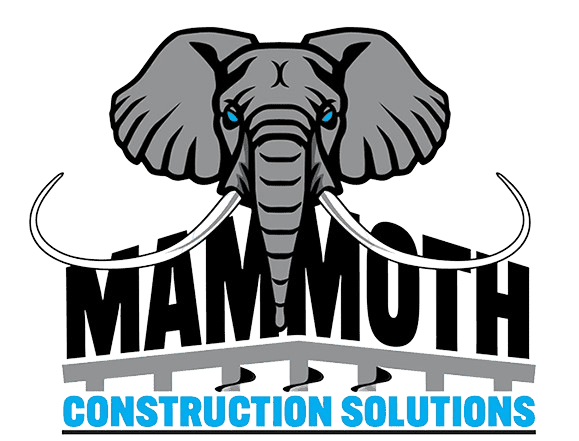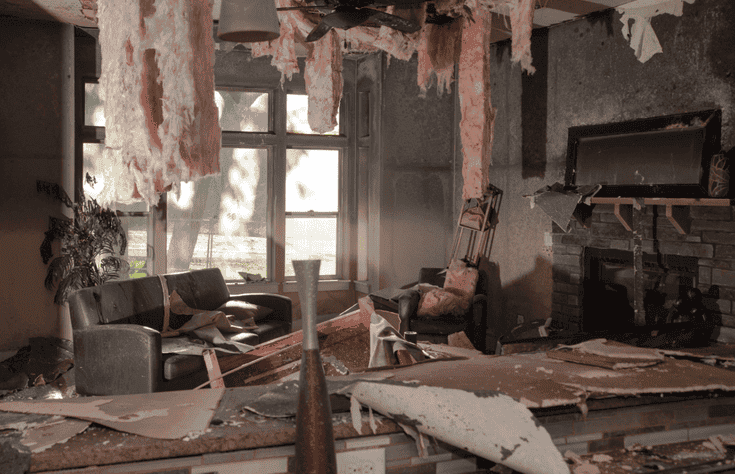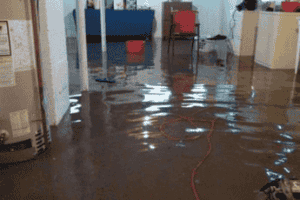If your property has experienced interior water damage caused by a roof leak, pipe leak, or any other water source, you’ve come to the right place.
This comprehensive guide is specifically tailored to assist you in navigating through the challenges of water damage restoration. Within this guide, you will gain valuable insights into key topics such as water damage restoration versus removal, immediate steps to take after water damage occurs, selecting a reliable water damage restoration contractor, and much more. We invite you to delve deeper into the world of water damage restoration as we explore effective strategies and solutions. At Mammoth 911 Restoration, we are dedicated to supporting you throughout the restoration process, providing the expertise and assistance you need to recover from water damage successfully.
What is Water Damage Restoration?
In simple terms, water damage restoration refers to the meticulous process of returning a water-damaged property to its original pre-damage condition. Although it may sound straightforward, the actual process of drying out a property is highly intricate and can span from several days to weeks, depending on the extent of the damage and the size of the affected area. Contrary to common misconceptions, water damage restoration encompasses far more than surface drying alone. It involves a comprehensive approach aimed at addressing all aspects of the damage. While it begins with water removal and extraction services, it extends to thorough drying using advanced equipment like humidifiers and air movers. It also encompasses contents restoration, materials removal and reconstruction, as well as mold prevention and remediation measures. In the following sections, we will delve deeper into the water damage restoration process, the role of a water damage restoration company, and provide answers to frequently asked questions regarding the restoration of a flooded property back to its pre-damage condition.
Water Damage Restoration Process
At the forefront of the water damage restoration process is a dedicated water removal company, often regarded as the “restoration first responders.” Upon arrival, their primary objective is to assess the property, contain and mitigate any further damage, and ultimately extract any standing water to initiate the restoration process. It is important to note that although water removal companies may operate independently, it is common for the same company to provide both removal and restoration services. However, it is after the water extraction stage when the comprehensive water damage restoration process truly commences. Let’s explore the typical unfolding of this process in more detail.
1. Additional Water Extraction
Depending on the specific circumstances, the water damage restoration process may involve the use of portable extractors to eliminate excess water from carpeting if it can be salvaged. However, in certain situations where the damage is extensive, it may be necessary to remove and dispose of the affected carpet entirely. The determination of whether the carpet can be saved or requires removal is made based on the severity of the water damage and the potential for effective restoration. Our experienced professionals will assess the condition of the carpet and make the most appropriate decision to ensure the restoration process progresses smoothly and effectively.
2. Demolition & Debris Removal
When faced with water damage, it is often necessary to remove specific building materials such as drywall down to the studs, carpeting, and carpet padding if they cannot be salvaged. This crucial step is typically carried out prior to the drying process, as removing the drywall to expose wall cavities and the carpeting to expose subflooring facilitates a more effective overall drying procedure. However, if it is determined that no structural damage has occurred, restoration companies can often bypass this step and proceed directly to drying out the property. Our skilled professionals will assess the extent of the damage and make informed decisions to ensure the most efficient and thorough restoration of your property.
3. Final Dry Out
Following that, your contractor will meticulously position air movers throughout the property in strategic locations to facilitate the drying process. Additionally, dehumidifiers will be strategically placed to extract moisture from the air, further aiding in the overall drying efficiency. With a well-executed drying plan in place, it is not uncommon for the property to undergo substantial drying within a matter of just a few days. Our skilled team will design and implement an effective drying strategy tailored to your specific situation, ensuring efficient and thorough restoration of your property in the shortest possible timeframe.
4. Applying Antimicrobial
In certain cases of water damage, there is a potential risk of fungal and mold growth. Given the right conditions, mold can start to develop within as little as 24 hours. To proactively address this concern and ensure the restoration process is comprehensive, a restoration company may decide to apply antimicrobial treatments. These treatments serve to prevent mold growth or eliminate existing mold spores, either as a precautionary measure or as a necessary step based on the extent of the water damage. Our diligent restoration team will assess the situation and take appropriate measures to mitigate any mold-related risks, safeguarding the health and integrity of your property.
5. Contents Restoration
While property damage can pose a threat to personal belongings, it is important to note that advancements in contents restoration technologies have significantly increased the chances of salvaging many items. Typically, at the early stages of the restoration process, a contents pack out is performed by a professional restoration company. During this phase, restorable items including textiles, clothing, electronics, photographs, and various hard goods are carefully removed from the premises and transported to an off-site facility for restoration. While not every item can be saved, the expertise and techniques employed during the restoration process make it possible to salvage a significant number of belongings. Our dedicated team will assess and restore your contents with utmost care, striving to protect and preserve as much as possible.
6. Reconstruction & Build Back
The last stage of the restoration process generally entails conducting moisture testing to ensure the property has achieved the required level of dryness. Subsequently, construction services come into play, focusing on reconstructing the building structure that was previously removed. This phase may involve tasks such as electrical and plumbing installations, drywall replacement, and the application of finish materials, among others. A comprehensive restoration company will guide you throughout the entire process, providing the necessary expertise and support to ensure a seamless transition from restoration to the final construction phase. Our dedicated team is committed to delivering top-notch services and assisting you every step of the way.
Difference between Water Removal vs Water Damage Restoration
The distinction between water removal and water damage restoration lies in the process itself. Water removal primarily focuses on preventing further damage from occurring, serving as a crucial step taken by professional restoration contractors to minimize the extent of property loss. This involves preserving the structural integrity of the property, salvaging recoverable contents, and isolating or securing areas where water damage could potentially expand. The removal phase also entails extracting water from the property to eliminate any ongoing threat and mitigate property damage. Commercial-grade truck-mounted extractors are commonly utilized to eliminate standing water, while portable extractors are employed to extract water from carpets and other soft surfaces. By effectively addressing water removal, restoration professionals pave the way for the subsequent restoration steps, ensuring a comprehensive and efficient recovery process.
What a Water Damage Restoration Company Does
The primary role of a water damage restoration company is to undertake the necessary measures to restore your property to its pre-loss condition. As mentioned earlier, the water damage restoration process encompasses various steps aimed at ensuring the thorough restoration of the property while preventing further damage and mold growth. Working in collaboration with a team of professionals, your restoration company will often assist you in dealing with your property owner’s insurance company, helping with claims filing and ensuring a smooth process from start to finish. While it is possible to have separate companies handle water removal and restoration, many property owners find it convenient to have a single company that can handle both aspects. At Mammoth 911 Restoration, for example, we are committed to supporting you throughout the entire journey, providing comprehensive services including cleanup, water removal, mold remediation, smoke and fire damage restoration, as well as roofing, interior, and exterior construction.



Leave a Reply